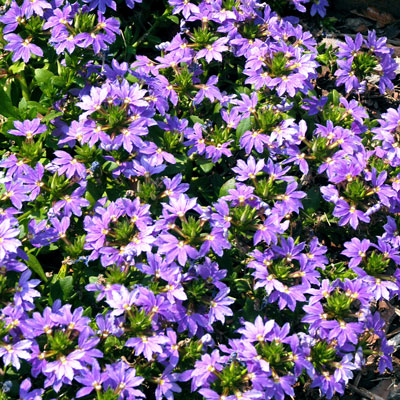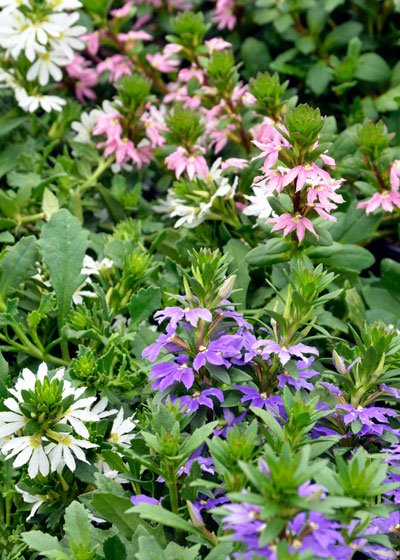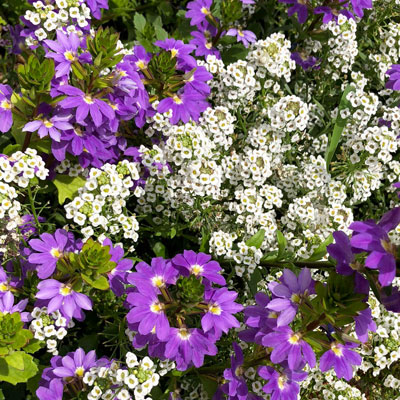Super-Star Aussie Plant: July 16, 2020

It didn’t take fanflowers long to catch on. I saw my first ones in a McKinney greenhouse back around 1990, and I heard my good friend, the late Joe Crump, in that slow Texas drawl, put four or five syllables into its name: Scaevola. It’s a funny looking name. Maybe Joe was just feeling his way through it, making sure he included every letter.
But enough of all that. This plant is so much more. Let me summarize it all to help sell it to you.
Fabulous fanflowers…
• Trailing plant that’s good in hanging baskets or as a wide-spreading bed edging.
• Mature size: 8-12 inches tall and 24-30 inches wide.
• Growth form: All types cascade.

• Flowers come in purplish-blue, white and pink, but don’t wander too far away from the blue. Blue is the rarest of all flower colors, and here you have one that’s proud to have a chance to perform for you in Texas!
• Good in sun or part sun. It might be satisfied with a little protection from the hottest mid-afternoon sun in the summer, but this is not a plant for the shade. It’s tougher than that!
• Give it loose, well-draining, highly organic planting soil. That goes for when you’re growing it in ground beds, but it goes double when you have it in patio pots and hanging baskets.
• Keep them moist at all times. If they wilt for a couple of hours, they’ll bounce right back. However, for the best performance, don’t let that happen.
• Feed them with a high-nitrogen, water-soluble plant food every couple of weeks.

You’ll find fanflowers in most area nurseries, usually in 4-inch pots. The plants may be intertwined within the pots, so be patient as you unwind them. You may also find them in large, showy hanging baskets. I learned early on that those baskets can be transplanted into large patio pots for instant beauty.
Here’s hoping you already knew most of what you’ve just read. If not, you have just made a great new friend. Give fanflowers a try in your gardens the rest of this year. It won’t let you down!
